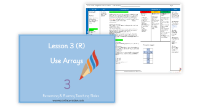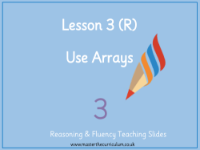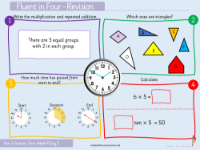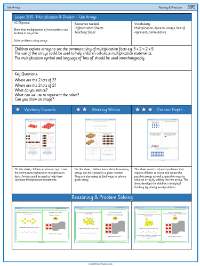Multiplication and division - Use Arrays - Planning
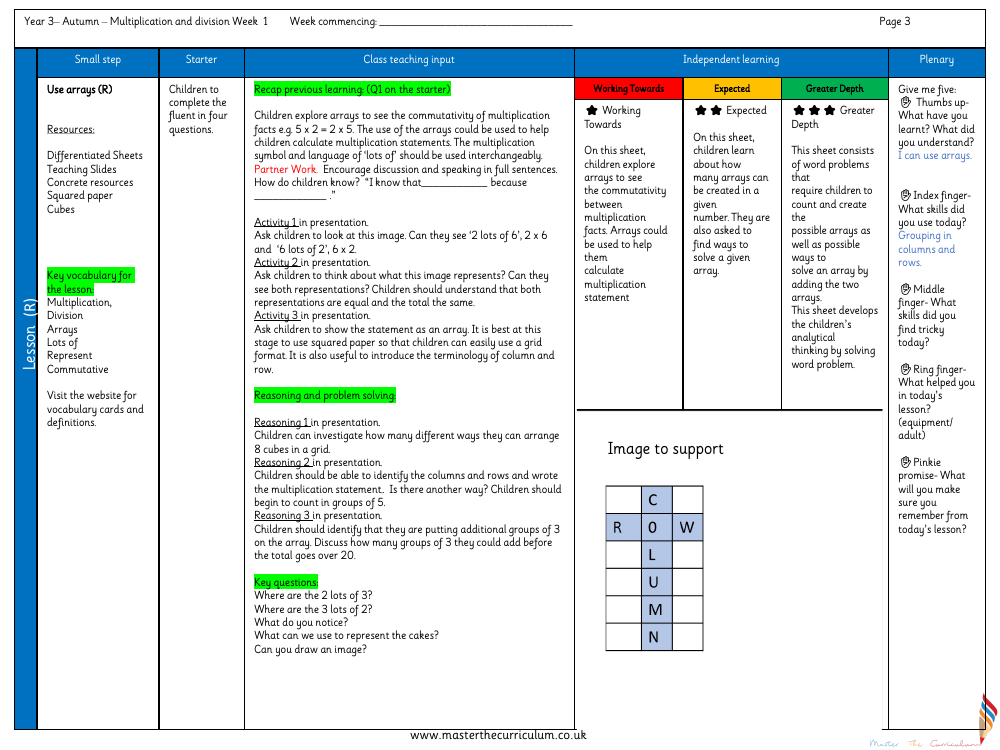
Maths Resource Description
In the Year 3 Autumn term curriculum focusing on multiplication and division, one of the initial concepts taught is the use of arrays. Arrays are a visual and practical way to understand and demonstrate multiplication and division. During the lesson, children are provided with a variety of resources, including differentiated sheets, teaching slides, concrete resources like cubes, and squared paper to facilitate their learning. The key vocabulary introduced includes terms such as 'multiplication', 'division', 'arrays', 'lots of', 'represent', and 'commutative'. The lesson encourages children to complete 'fluent in four' questions and recaps previous learning, highlighting the commutative property of multiplication using arrays.
The class teaching input involves interactive activities where children are asked to identify and represent multiplication statements using arrays. They are guided to see the relationship between rows and columns and how these can represent 'lots of' a certain number. Through partner work and class discussions, students articulate their understanding using full sentences. Reasoning and problem-solving tasks encourage students to explore different ways of arranging cubes in a grid and to identify multiplication statements based on the rows and columns observed. The plenary session includes a 'Give me five' reflection activity, where children review what they have learned, the skills they have used, and what they found challenging. The lesson aims to ensure that students understand how to use arrays for multiplication and division and can apply this knowledge to different levels of complexity, from working towards expected standards to achieving greater depth in their understanding.
